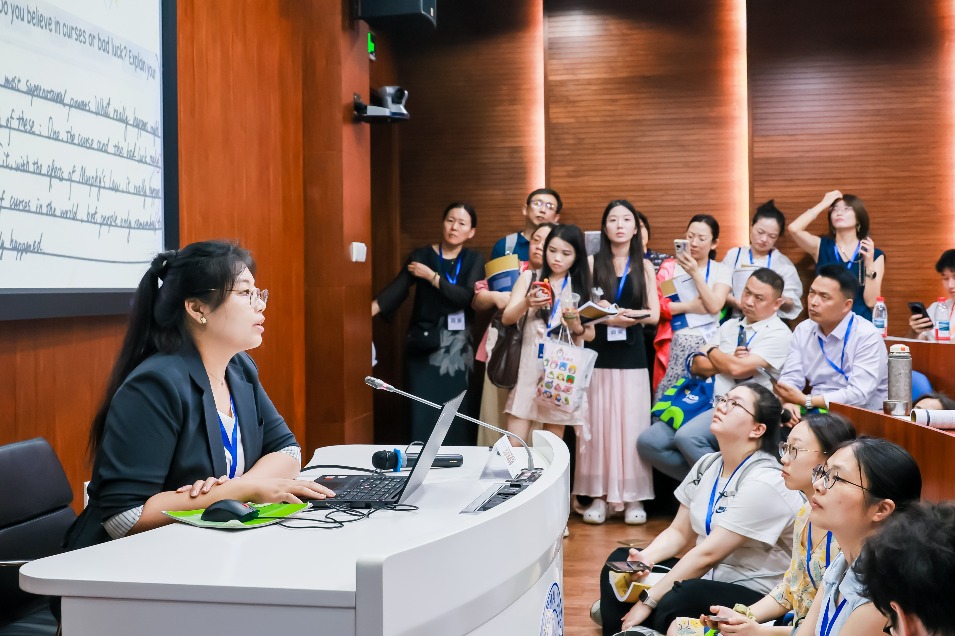Art town
A previously remote and underdeveloped area in Henan is gradually waking up to its tourism potential, Yang Feiyue reports.

Shibanyan, once a secluded arcadia, is now welcoming visitors with its natural scenery and distinctive homestay facilities.
The town, located in the northwest of Linzhou city in Central China's Henan province, is tucked away in the hills and forests where gurgling brooks flow slowly across its terrain. The town has around 17 villages, where fewer than 10,000 people reside. Locals have been sticking to the old-fashioned way of life, rising with the chickens to do farm work and going to bed soon after sunset.
Shibanyan has easy access to rocks as it leans on the Taihang Grand Canyon. The earlier generations of residents took full advantage of the natural setting and built their houses with the fragments. Over the decades, the stone construction has become the town's main feature, drawing many visitors.
Jing Hao, a landscape master painter of the Five Dynasties and Ten Kingdoms (907-960) period, lived in the canyon area and created many paintings. The magnificent view still casts a spell on modern artists.
Over the past decade, more than 2 million art students and enthusiasts have visited the town every year, according to local authorities. Such groups are affectionately called "the alumni of Shibanyan".
Yuan Wenbin, a professor at the Tianjin Academy of Fine Arts, made a trip to Shibanyan to work on paintings in late August. The last time he visited the area for artistic inspiration was some eight years ago.
"I could sense the changes in the local art economy over the years," he says.
Established artists and art students usually stay in the town from five days to a month to observe the magnificent canyon and depict the scenery as it changes with the seasons on paper or canvas with pens and brushes. The town provides further inspiration with its predominant stone architecture.
Wei Jianhong was born and raised in Shibanyan and has witnessed significant changes in his hometown.
"Weeds grew wildly years earlier, and there was no road to the outside world," says Wei, the 43-year-old secretary-general of a Taihang Mountains art industry association.
Poverty had forced some locals to move out and those who stayed back trekked far with local produce on their shoulders to exchange for daily necessities.
"It was not until the art industry started to emerge that villagers managed to start businesses at their doorstep and became better-off," Wei says.
Yang Xian, a local resident, saw a business opportunity several years ago when he found some painters had trouble finding accommodation in the town.
From a rural homestay that offered local food, Yang's house has evolved into a big facility that provides catering, accommodation and training to sketch.
Since then, his annual income has reached 1 million yuan ($144,900), he says.
Homestay business
In addition to artists who carry drawing boards and folding chairs, ordinary travelers also flock to Shibanyan over summer vacations, says Dai Gangming, who runs a countryside resort, named Trip.com Group Country Retreat in Shibanyan, which is a joint effort between local authorities and major domestic travel agency Trip.com Group.
"We've been fully booked during weekends, and we believe the number of clients will increase significantly this year," Dai says.
He started to receive customer inquiries about the resort's reopening in May, following a COVID-19 resurgence in the province in March. The resort had halted business in accordance with pandemic-control policies in the country.
"Some of our patrons were persistent and frequently asked when we would open again," Dai says. "It also gave me confidence about the local economic recovery."
The brisk bookings in late May are proof of the potential of the resort he runs, Dai adds.
The main tourist season in Shibanyan, including in the canyon area, lasts from April to October. The town is a 30-minute drive from downtown Linzhou one way and is at a comfortable distance from the provincial capital, Zhengzhou. Local authorities have come up with favorable policies to encourage rural homestay businesses in Henan over the years.
The grand canyon's popularity as a tourist spot has increased the overall number of visitors to Shibanyan, says Lu Hongwei, the town's Party secretary.
That has prompted many local residents to renovate their own courtyard houses in the villages as sketching sites and homestays. Now, the town has more than 300 homestays, but less than 10 percent offer services to guests who seek a sumptuous experience.
"This proportion is far from enough," Lu says, adding that more visitors now value quality services.
During the 2019 May Day holiday, more than 50,000 travelers flocked to the town, and the few upscale homestays that charged more than 1,000 yuan a night were all booked, Lu adds.
Data from Trip.com Group shows that many visitors to Shibanyan opt for homestays in neighboring cities and counties after failing to book at the limited number of hotels with good facilities in the town.
The resort that opened in cooperation with Trip.com Group was part of local authorities' efforts to retain travelers with money to spend.
Such venues will pave the way for more leisure activities in the area, including paragliding, Lu says.
Since the rural resort went into operation, many travelers have changed their original plans of just dropping by for sightseeing and prolonged their stay in the town to a few nights.
"We had a guest from the medical services who visited us again and said that he would return to take a two-day break in the mountain from time to time," Dai says.
Rural experience
Local authorities have picked up on the increased demand from urbanites of a serene getaway to blow off steam and reconnect with nature.
The resort Dai runs has tapped into the local farming culture and intangible heritage and is offering related "immersive experiences "for visitors.
People can try out farming tools and view paintings featuring local agriculture during their stay. Planting saplings, applying fertilizers, removing weeds and harvesting vegetables can also be arranged. They can make cakes out of their freshly picked hawthorns and persimmons or try dyeing clothes using plants.
Themed events based on the year's 24 solar terms have also been developed, including spring plowing in March, a planting festival in May, a camping carnival in June and an autumn harvest in October.
Moreover, the resort has rolled out trips to historical sites in the neighborhood, as well as experiences involving traditional crafts such as paper-cutting, seal-cutting, inscribing on animal bones and tortoise shells and performing shadow puppet show.
Rural learning tours are in place for those who want to better understand traditional lifestyle.
Shibanyan has become an accredited sketching-and-painting site for more than 280 art institutes across the country, including the Central Academy of Fine Arts in Beijing.
Since July, a large-scale sketch exhibition has been staged in Shibanyan that will become an annual event, starting this year. Local authorities want to turn the town into "an open-air museum" for travelers.
"The town is presenting a new pattern of industry development and all-around tourism integration," Lu says.





Today's Top News
- China and US agree to extend tariff rates after two day talks in Stockholm
- US, China trade talks candid, in-depth, constructive, says China intl trade representative
- China unveils delegation for Chengdu World Games
- Xi urges youths to champion vision of peace
- All-out relief efforts underway in flood-hit regions
- Crucial to foster stable China-ROK ties: China Daily editorial






























